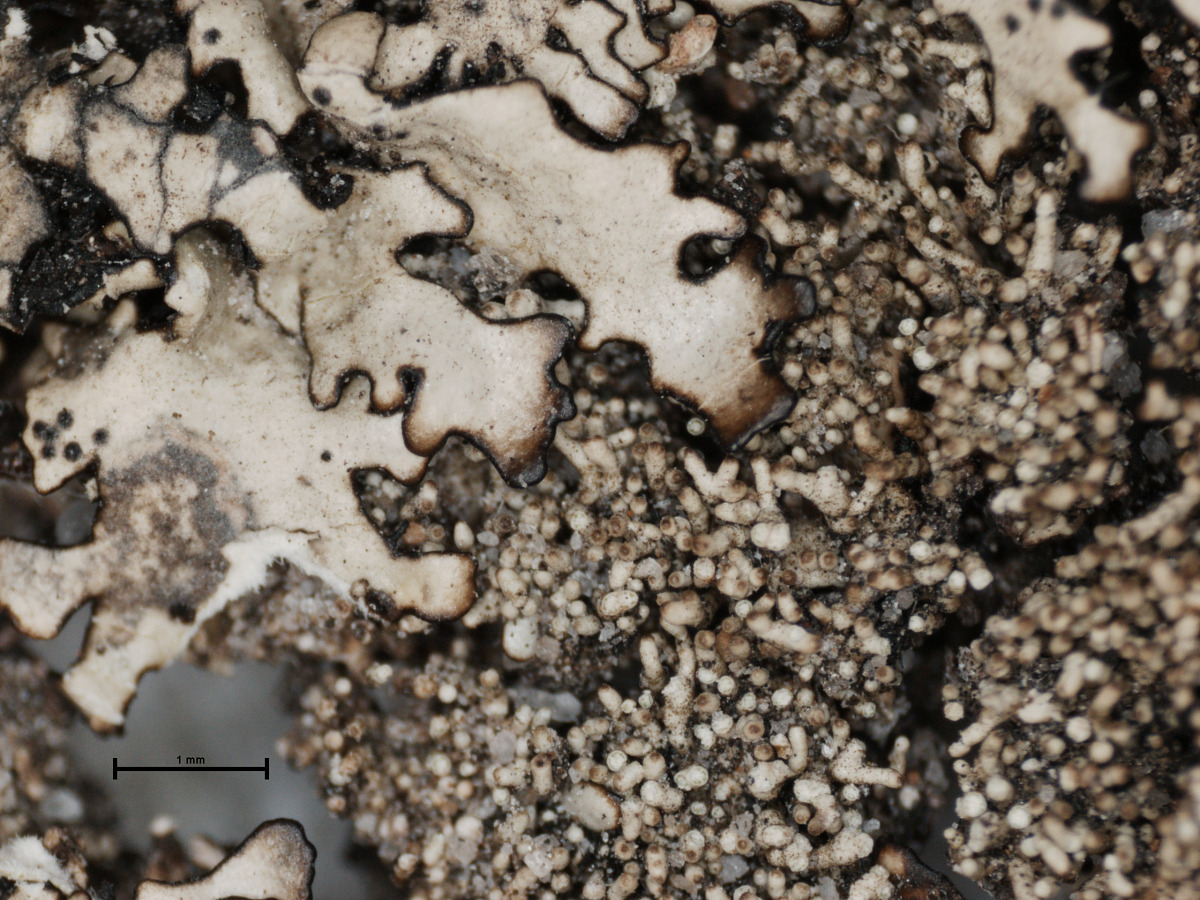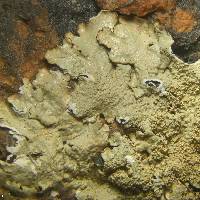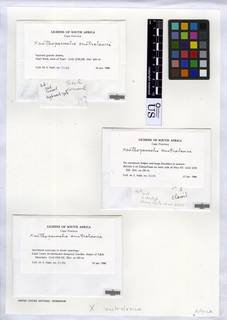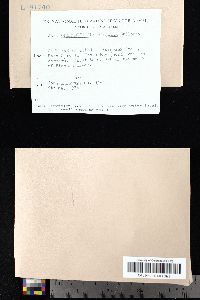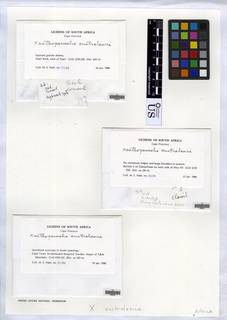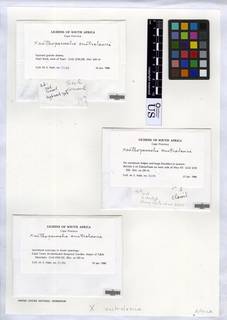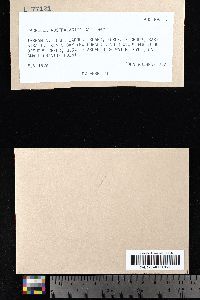
Consortium of Lichen Herbaria
- building a Global Consortium of Bryophytes and Lichens as keystones of cryptobiotic communities -
- Home
- Search
- Images
- Species Checklists
- US States: O-Z >
- US National Parks
- Central America
- South America
- US National Parks
- Southern Subpolar Region
|
|
|
|
Family: Parmeliaceae
[Parmelia australasica (D.J. Galloway) Filson] |
Nash, T.H., Ryan, B.D., Gries, C., Bungartz, F., (eds.) 2004. Lichen Flora of the Greater Sonoran Desert Region. Vol 2. Thallus: foliose, adnate to loosely adnate, 5-20 cm in diam., irregularly lobate lobes: sublinear to subirregular, elongate, plane to subconvex, separate, contiguous to imbricate, 1.8-4 mm wide, not lobulate; apices: subrotund, smooth to crenate, eciliate upper surface: yellow-green, smooth, dull to slightly shiny, epruinose and somewhat maculate in white patches isidia: abundant, cylindrical to +coralloid branched, 0.1-0.15 mm in diam., 0.1-1 mm tall; tips: syncorticate but sometimes breaking off and appearing epicorticate, blackish brown; soralia and pustulae absent medulla: white, with continuous algal layer lower surface: black, plane, sparsely to moderately rhizinate; rhizines: black, simple, 0.3-0.6 mm long Apothecia: infrequent, substipitate, 3-8 mm wide, laminal on thallus; disc: cinnamon-brown to dark brown; margin: smooth, epruinose asci: clavate, 8-spored ascospores: simple, ellipsoid, hyaline, 9-10 x 4-5 µm Pycnidia: not observed Spot tests: upper cortex K-, C-, KC-, P-; medulla K+ yellow turning deep red, C-, KC-, P+ orange Secondary metabolites: upper cortex with usnic acid (major); medulla with salazinic acid (major), consalazinic acid (minor) and norstictic and protocetraric acids (both trace). Substrate and ecology: on acidic rocks, often in open, arid habitats World distribution: Australasia, Africa, North and South America Sonoran distribution: occasional at intermediate elevations in southeastern Arizona and Chihuahua. Notes: For a period of time X. australasica was used for any isidiate Xanthoparmelia in North America with salazinic acid and a black lower surface. However, comparisons with abundant X. australasica material from Australasia do not support this interpretation, as most North American material is much more tightly adnate, has more narrow lobes and different kinds of isidia. By far the most common species in the Sonoran region is X. tinctina, which initially has globose to subglobose isidia. In addition, X. isidiigera with its very tightly adnate thallus and even more narrow (c. half the size of those of X. australasica), cylindrical isidia occurs occasionally. Xanthoparmelia australasica is in fact relatively rare in North America. |
Powered by Symbiota

